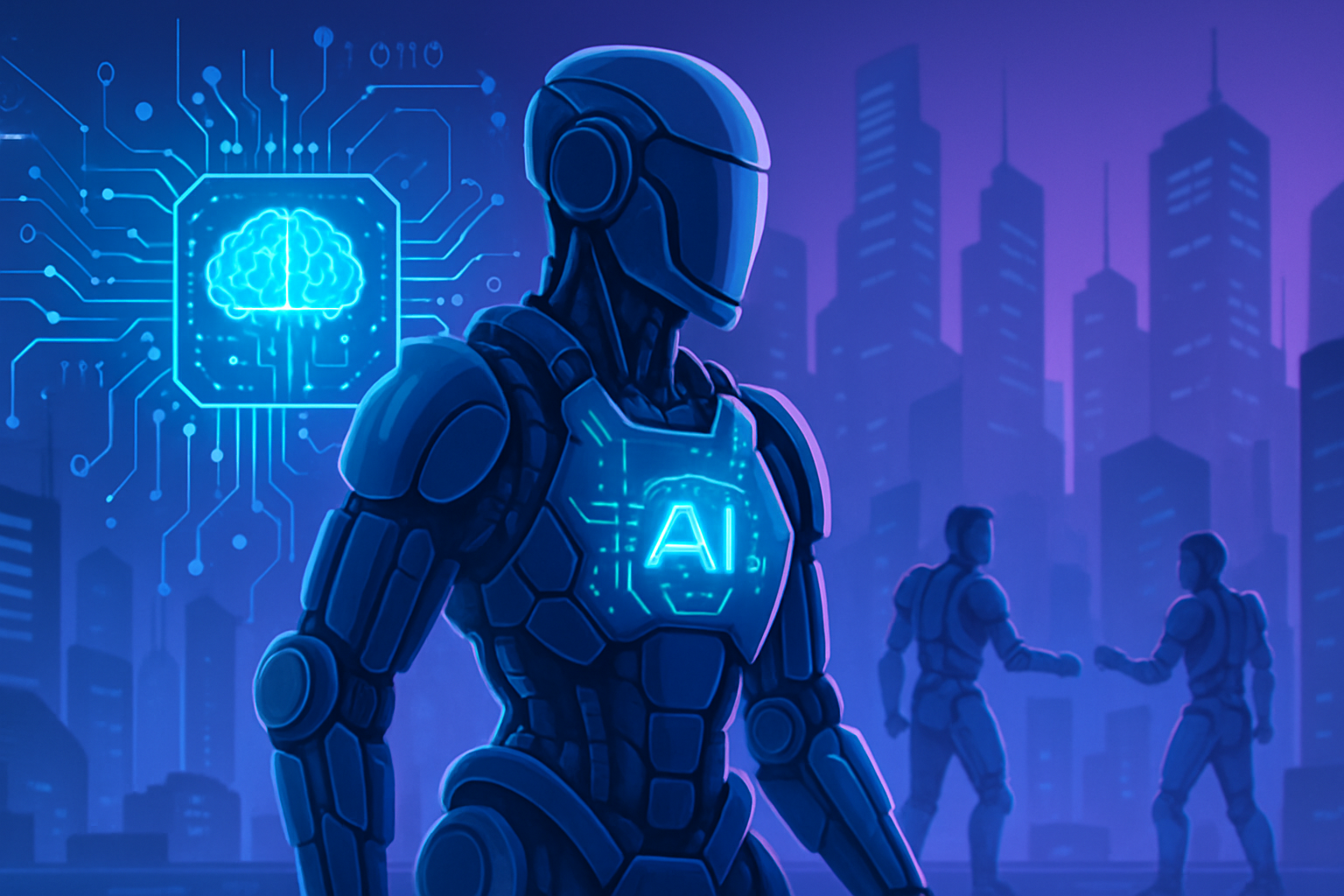Artificial intelligence is radically transforming the efficiency of exoskeletons, revolutionizing mobility assistance. This marriage between technology and human physicality opens new perspectives for those living with functional limitations. The improvement of interactions between the user and the exoskeleton becomes a tangible reality, thanks to sophisticated algorithms integrating visual and kinesthetic inputs.
The challenges of rehabilitation and support for people with disabilities are mitigated by this advancement. Personalized and adaptable support is now a necessity, strengthening users’ autonomy. The synergy between robotics and artificial intelligence allows exoskeletons to evolve towards increasingly intuitive solutions.
Optimization of exoskeletons through artificial intelligence
Exoskeletons, these portable robotic devices, are generating increasing interest in our aging society. Designed to assist users facing movement difficulties, these tools are continuously improving. Artificial intelligence (AI) proves to be a decisive asset in enhancing their efficiency.
Integration of sensors and AI
Traditionally, exoskeletons rely on pre-programmed movements, limiting their adaptability in varied environments. Researchers from the RIKEN Guardian Robot project in Japan are changing the game. They have developed an exoskeleton capable of adapting to the user’s dynamics through AI and visual sensors.
Optimal functioning through artificial intelligence
This system relies on an AI model that integrates visual data captured by a camera positioned near the user’s eyes, as well as kinematic sensors placed around the knees and torso. The AI processes this information to provide relevant assistance during daily tasks, such as picking up an object or climbing a step.
The results are significant. AI-enhanced assistance has led to a measurable reduction in muscle activation during movements, demonstrating the effectiveness of the support offered by the exoskeleton. Thus, users move with less physical effort.
Adaptability between users
A revolutionary aspect of this technology lies in its adaptability. Data gathered for one user can be generalized to other users without the need to reset the algorithms. A significant advancement in the field of exoskeletons, as it allows for broad application without the complications of individual adjustments.
Potential applications in various sectors
Experts anticipate considerable advancements in fields such as rehabilitation, hospitals, and elderly care. AI could provide personalized and adaptive assistance to individuals with reduced mobility or those recovering from injuries. This support could significantly improve their autonomy and quality of life.
Towards a promising future
This innovation opens fascinating perspectives for intelligent exoskeletons, capable of assisting a wide range of human activities in varied environments. Scientists envision increased use of AI, not only to optimize the performance of exoskeletons, but also to refine interactions between humans and machines.
Updated companies, such as Microsoft, and other players in the field of AI, are contributing to this effort. The impact of AI is felt in robotics with issues touching on health, mobility, but also social integration.
Intelligent exoskeletons embody a future where technology can transform our interaction with the body and our environment. The advancements made by research teams, such as RIKEN, point towards a beneficial synergy between humans and machines, triple promising for the future of care and assistive technologies.
Frequently asked questions about artificial intelligence and exoskeletons
What is the role of artificial intelligence in the functioning of exoskeletons?
Artificial intelligence (AI) enhances the control of exoskeletons by adapting their assistance to the movements and specific needs of users, making the interaction more natural.
How does artificial vision contribute to the effectiveness of exoskeletons?
Artificial vision allows exoskeletons to perceive the user’s environment and adjust their assistance according to obstacles and specific tasks, such as lifting an object or climbing stairs.
Can AI-based exoskeletons adapt to different users without complex reprogramming?
Yes, exoskeleton systems using AI models have shown adaptability between users, allowing them to provide support without the need for recalibration, thus simplifying the process of use.
What advantages does AI bring to physical rehabilitation via exoskeletons?
AI allows for the customization of the level of support and assistance based on the user’s progress, promoting a more effective and accelerated rehabilitation through a more accurate response to individual needs.
Can artificial intelligence predict the user’s movement intentions?
Yes, advanced AI systems use techniques for estimating movement intentions to anticipate the user’s movements, thereby optimizing the exoskeleton’s responsiveness.
What types of sensors are used to enhance the assistance of AI-based exoskeletons?
Exoskeletons integrate visual sensors, as well as kinematic sensors placed on body parts like the knees and torso, to collect data and provide appropriate assistance.
How does artificial intelligence influence the autonomy of exoskeleton users?
By automatically adapting the level of assistance to needs, AI maximizes user autonomy, enabling them to perform daily tasks with less external support.
Can intelligent exoskeletons be used in various environments?
Yes, due to their adaptability, these exoskeletons can be utilized in diverse contexts, whether in domestic, medical, or industrial settings, constantly adjusting their functionalities.
How does AI improve the user experience of exoskeletons?
It optimizes the human-machine interface, allowing intuitive control and smoother interaction, which enhances user satisfaction while reducing fatigue during use.
What are the future challenges for AI and exoskeletons?
The future of AI-based exoskeletons lies in developing even smarter and more personalized systems, capable of processing data in real-time and providing proactive assistance, thus improving social integration and quality of life for users.






